"CONNECTING RESEARCH TO REALITY"
Chronobiology Handwritten Notes | ZOOLOGY
Explore the fascinating field of chronobiology, which studies biological rhythms and their adaptation to solar and lunar cycles. Learn about circadian rhythms, the role of the suprachiasmatic nucleus, and how these rhythms impact sleep, health, and behavior across various disciplines.
STUDY ZONE
𝐒𝐇𝐈𝐁𝐀𝐒𝐈𝐒 𝐑𝐀𝐓𝐇
11/28/20248 min read
CHRONOBIOLOGY HANDWRITTEN NOTES
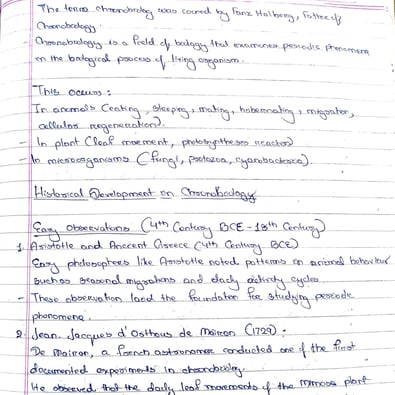

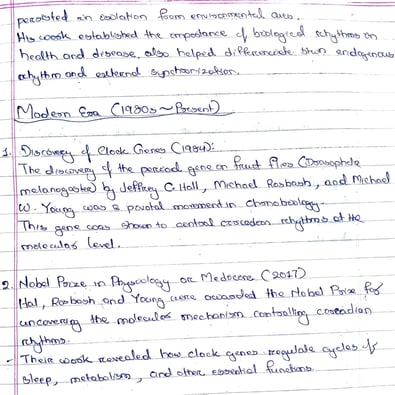
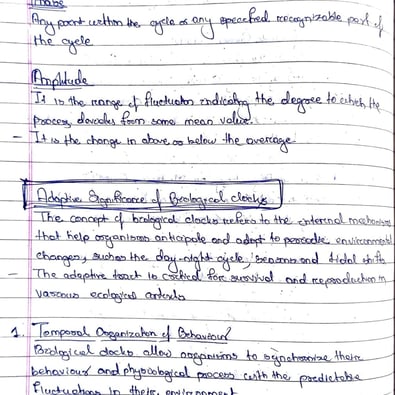
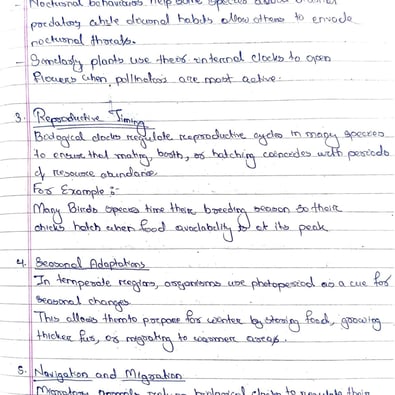
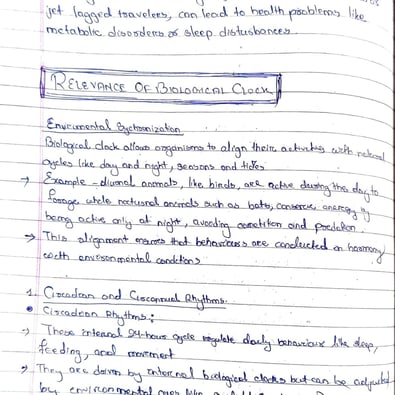
ADVERTISEMENTS
ADVERTISEMENTS

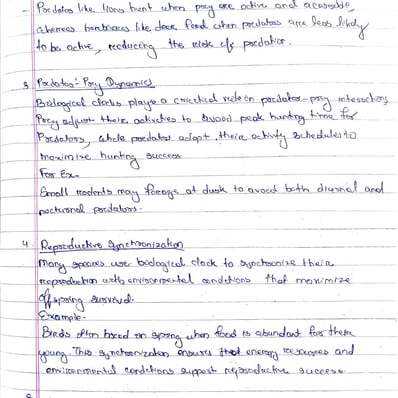
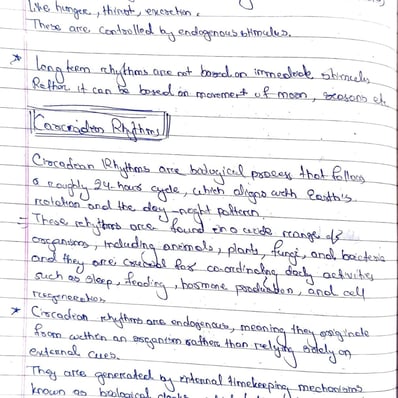
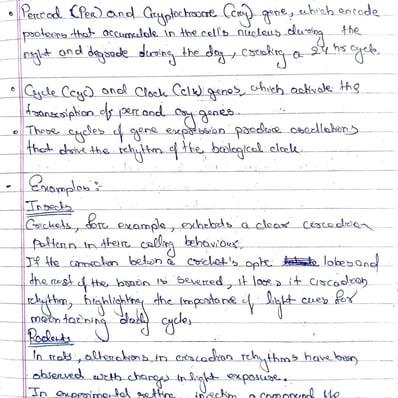
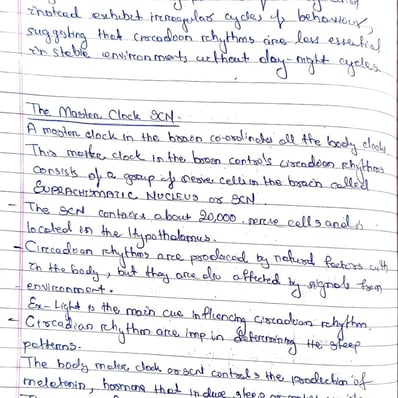
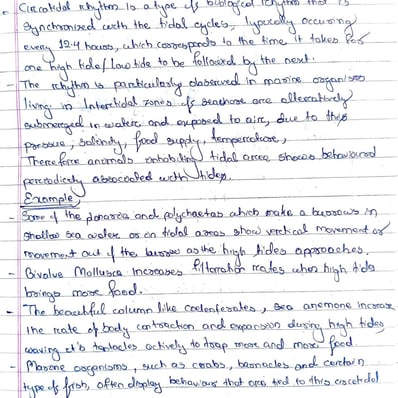
ADVERTISEMENTS
ADVERTISEMENTS

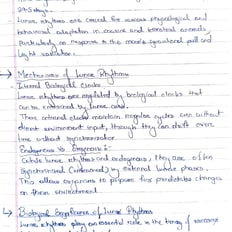
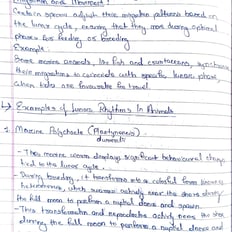
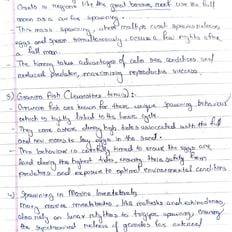
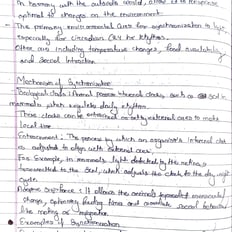
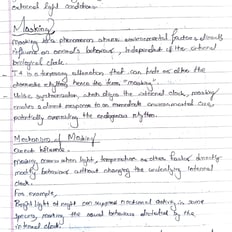
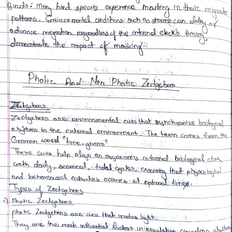
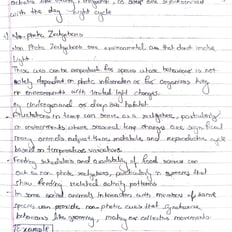
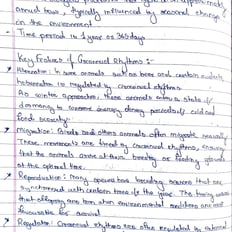
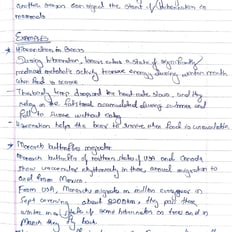
ADVERTISEMENTS
ADVERTISEMENTS
Notes on Photoperiod and Regulation of Seasonal Reproduction
Photoperiod and Its Role in Seasonal Reproduction
Photoperiod refers to the length of time an organism is exposed to light during a 24-hour period. It is a crucial environmental cue for regulating seasonal behaviors in many animals, especially those in temperate regions where the length of day and night varies with the seasons.
Changes in photoperiod help animals synchronize their biological activities, such as breeding, with favorable environmental conditions, including food availability and optimal temperatures.
Mechanisms of Photoperiod Sensitivity
The biological mechanism that allows animals to detect and respond to photoperiod is based on photosensitivity, which involves changes in the sensitivity of an organism’s internal clock to light over the course of the day.
Hypothesis of Photosensitivity: In birds such as white-crowned sparrows, photosensitivity peaks at specific times of the day, and light exposure during this sensitive period can stimulate reproductive behaviors, such as testicular growth in males.
In these species, the ability to detect light during certain hours of the day (often 16–20 hours after dawn) triggers physiological changes that prepare the animal for reproduction. A shift in light exposure can alter the timing of reproductive events.
Examples of Photoperiodic Control in Birds
White-Crowned Sparrows: These birds exhibit a clear photoperiod-driven reproductive cycle. When exposed to longer daylight hours in spring, they experience hormonal changes that lead to increased testicular size and readiness for mating.
European Stonechats: In experiments where stonechats were raised under controlled light regimes, they exhibited reproductive cycles influenced by photoperiod, even when other environmental conditions were constant. This shows that photoperiod is a key entraining cue for their reproductive timing.
Photoperiod and Reproductive Timing in Variable Environments
Rufous-Winged Sparrows: In desert environments like the Sonoran Desert, rufous-winged sparrows time their reproduction not just based on photoperiod but also in response to unpredictable cues like rainfall. The onset of the rainy season stimulates reproductive readiness by triggering the production of gonadotropins, which increase reproductive hormone levels.
This demonstrates that in environments with erratic food and water availability, animals may rely more on non-photic cues (such as rainfall) to time reproduction, even though photoperiod still plays a role in setting the annual cycle.
Photoperiod in Tropical Environments
In tropical regions, where day lengths are relatively constant throughout the year, even slight changes in photoperiod can influence reproductive cycles. For example, some tropical birds, like spotted antbirds, are highly sensitive to small variations in the length of day and night, which can stimulate gonadal development and breeding behaviors.
Adaptive Significance of Photoperiodic Regulation
Energy Conservation: By synchronizing reproduction with seasonal food abundance, animals ensure that offspring are born when resources are most available, increasing their chances of survival.
Survival Strategy: In species where the timing of reproduction is critical, photoperiod allows animals to anticipate the best environmental conditions for raising young. For example, breeding in the spring ensures that offspring have access to abundant food before the harsh winter months.
Photoperiod plays a fundamental role in regulating seasonal reproduction in many animal species. It enables animals to synchronize their reproductive behaviors with optimal environmental conditions, ensuring greater survival of offspring and maximizing reproductive success. The ability to detect and respond to changes in day length is a critical adaptive strategy, particularly for species in temperate regions with predictable seasonal changes.
ADVERTISEMENTS
ADVERTISEMENTS
Notes on the Role of Melatonin
Melatonin is a hormone produced primarily by the pineal gland in mammals. It plays a central role in regulating biological rhythms, including circadian rhythms (daily cycles) and seasonal behaviors such as reproduction.
Role in Circadian Rhythms
Circadian Rhythm Regulation: Melatonin is produced in response to darkness and is involved in regulating sleep-wake cycles. It helps synchronize the body’s internal biological clock with the external light-dark cycle. The suprachiasmatic nucleus (SCN) of the brain, which controls circadian rhythms, signals the pineal gland to release melatonin at night, promoting sleepiness and preparing the body for rest.
Light Influence: Exposure to light, especially blue light, suppresses melatonin production. This process helps organisms align their internal clocks with the external environment, ensuring that they are active during the day and resting at night.
Melatonin in Seasonal Reproduction
Seasonal Reproductive Cycles: In many animals, melatonin helps regulate seasonal reproduction by responding to changes in photoperiod (the length of daylight). As the days shorten in the fall, melatonin production increases, which in turn affects the release of reproductive hormones such as gonadotropins, influencing the timing of mating and reproduction.
Influence on Breeding: In seasonal breeders like certain mammals, melatonin acts as a signal to prepare for breeding by interacting with other hormones. For example, in deer and other mammals, shorter day lengths in winter increase melatonin levels, which trigger physiological changes that prepare them for reproduction when conditions improve.
Species-Specific Adaptation: Species in temperate regions often breed in the spring, taking advantage of increased food availability and milder conditions. Melatonin helps these species time their reproduction to ensure that offspring are born when environmental conditions are most favorable.
Mechanism of Action
Interaction with the SCN: The SCN is the master biological clock in the brain, and it responds to melatonin to help synchronize various physiological and behavioral processes with the day-night cycle. Melatonin’s action on the SCN helps to fine-tune circadian rhythms and seasonal cycles, allowing organisms to adapt to both daily and annual changes.
Hormonal Pathways: Melatonin interacts with a variety of reproductive hormones and regulatory pathways to influence the timing of seasonal behaviors. By signaling changes in day length through melatonin, animals can adjust their breeding schedules, migratory patterns, and metabolic states.
Melatonin as a Tool in Human and Animal Studies
Jet Lag: Melatonin supplements are often used to help adjust the body's internal clock, particularly in cases like jet lag or shift work, where the sleep-wake cycle is disrupted. By taking melatonin at specific times, individuals can shift their internal rhythms to align with the new time zone.
In animal research, melatonin is used to manipulate circadian rhythms and reproductive cycles. For example, in laboratory settings, researchers can control the timing of reproduction in mammals by adjusting light exposure, influencing melatonin secretion.
Melatonin is a crucial hormone in regulating biological rhythms, from daily circadian cycles to seasonal reproductive patterns. By responding to light changes, it helps synchronize internal clocks with environmental cues, ensuring that animals’ behaviors and physiological processes are optimally timed for survival and reproduction.
ADVERTISEMENTS
ADVERTISEMENTS
Detailed Notes on Jet Lag
Jet lag is a temporary disruption of the body's circadian rhythms caused by rapid travel across multiple time zones. This condition occurs when the body’s internal clock is out of sync with the new local time, leading to disturbances in sleep, alertness, and overall body functions.
Mechanism of Jet Lag
Circadian Rhythm Disruption: The human circadian rhythm, which regulates the sleep-wake cycle, is typically aligned with the local time zone's day-night cycle. However, when traveling quickly across time zones, the internal clock remains synchronized with the departure location's time, while external cues like sunlight are aligned with the destination's time. This misalignment creates a conflict between the biological clock and environmental cues.
Hormonal Influence: Melatonin, a hormone involved in regulating circadian rhythms, plays a significant role in jet lag. It is produced by the pineal gland in response to darkness, helping to promote sleep and align the body’s internal clock with the natural light-dark cycle. When traveling, melatonin production is disrupted, and the body’s sleep-wake schedule needs time to adjust.
Symptoms of Jet Lag
Sleep Disruptions: Individuals may experience difficulty falling asleep, waking up at unusual hours, or feeling excessively tired during the day.
Fatigue: A common symptom due to the misalignment of the internal clock, causing energy levels to fluctuate and impair daily functioning.
Digestive Issues: Changes in the timing of meals and sleep can lead to gastrointestinal problems such as indigestion or irregular bowel movements.
Cognitive Impairment: Difficulty concentrating, memory problems, and overall reduced cognitive performance may occur due to disrupted circadian rhythms.
Factors Affecting the Severity of Jet Lag
Number of Time Zones Crossed: The greater the number of time zones crossed, the more significant the disruption to the circadian rhythm.
Direction of Travel: Traveling eastward tends to cause more severe jet lag than westward travel because it requires shortening the day, which is harder for the body to adjust to than lengthening it.
Individual Differences: Some individuals are naturally "morning people" or "night owls" and may experience jet lag differently based on their chronotype. People who are naturally inclined to wake up early (morning chronotype) may have less difficulty traveling westward, while night owls may struggle more with eastward travel.
Treatment and Management
Gradual Adjustment: Before traveling, individuals can try adjusting their sleep schedule gradually by going to bed and waking up one hour earlier or later each day, depending on the direction of travel.
Light Exposure: Exposure to bright light at the appropriate times can help reset the biological clock. For example, sunlight in the morning can help travelers shift their internal clock to an earlier time, while light exposure in the evening can delay the clock for westward travel.
Melatonin Supplements: Taking melatonin at the right time can help adjust the sleep-wake cycle. It is typically recommended to take melatonin in the evening at the destination's local bedtime to promote sleep and synchronize the body’s internal clock.
Sleep Hygiene: Ensuring a comfortable sleep environment, avoiding caffeine or alcohol close to bedtime, and sticking to a consistent sleep schedule can also help mitigate the effects of jet lag.
Adaptive Strategies for Avoiding Jet Lag
Hydration and Diet: Staying hydrated and eating light, balanced meals can help reduce fatigue and digestive issues associated with jet lag.
Physical Activity: Light exercise during the day can help boost energy levels and facilitate better sleep at night, aiding in the adjustment to a new time zone.
Resting Upon Arrival: If possible, taking short naps upon arrival can help reduce fatigue, but it’s important to avoid long naps that might interfere with adapting to the local time zone.
Jet lag occurs when the body’s circadian rhythms are out of sync with the local time zone due to rapid travel across time zones. The severity of jet lag can be minimized through strategic adjustments such as light exposure, melatonin supplementation, and gradual changes to sleep patterns. Understanding these methods can help travelers adapt more quickly and reduce the disruptive effects of jet lag.

Drop Us a Line
We’d Love to Hear from You
RATHBIOTACLAN
Feel free to explore, engage, and embark on your own journey of discovery within RathBiotaClan. Together, let's make a difference in the world of Zoology_Bioscience !
